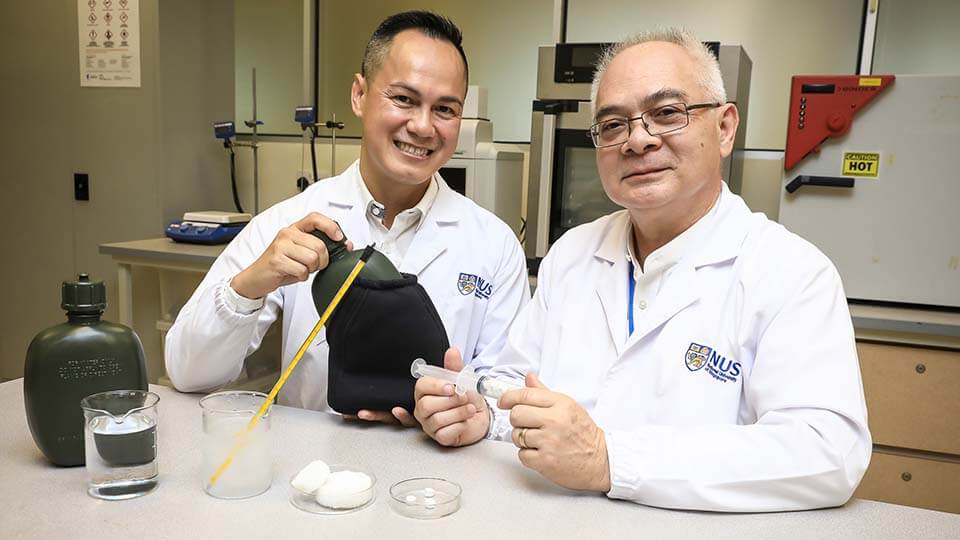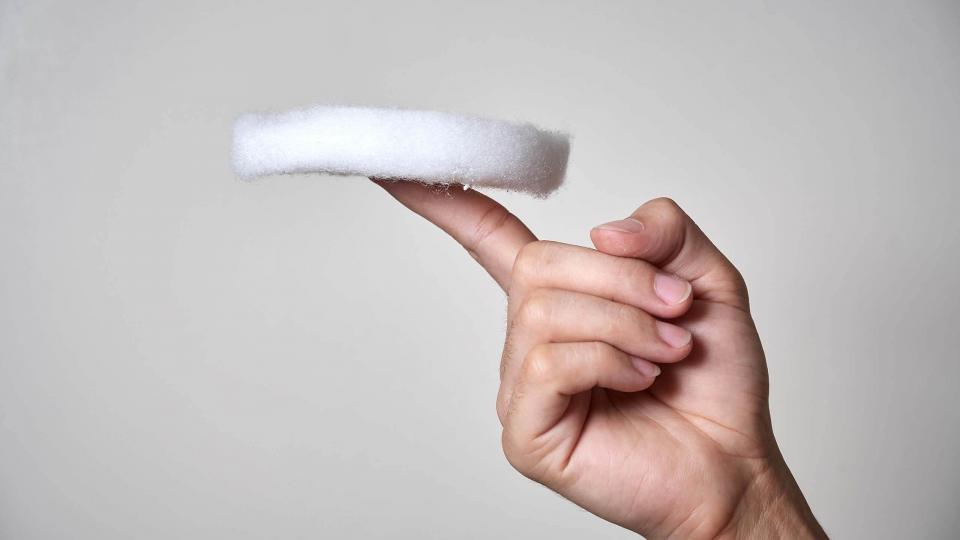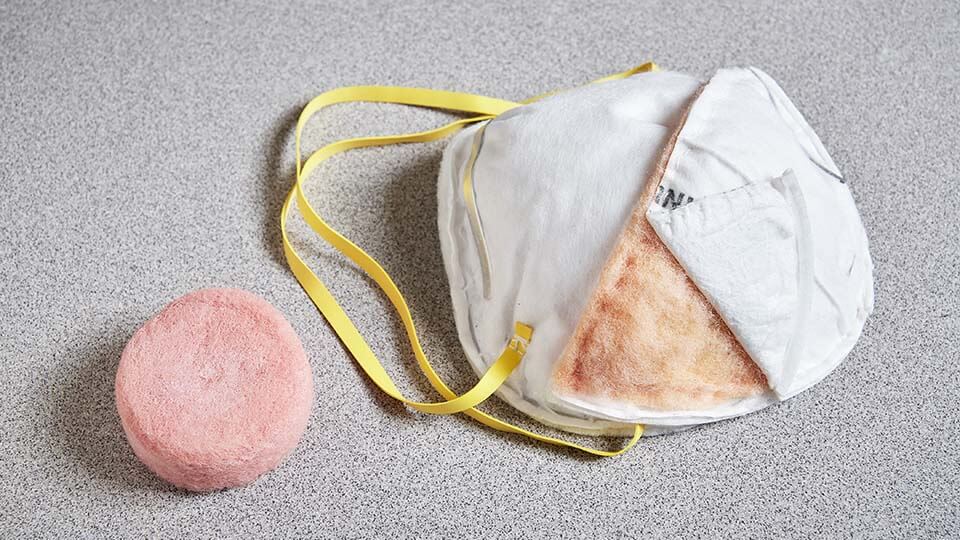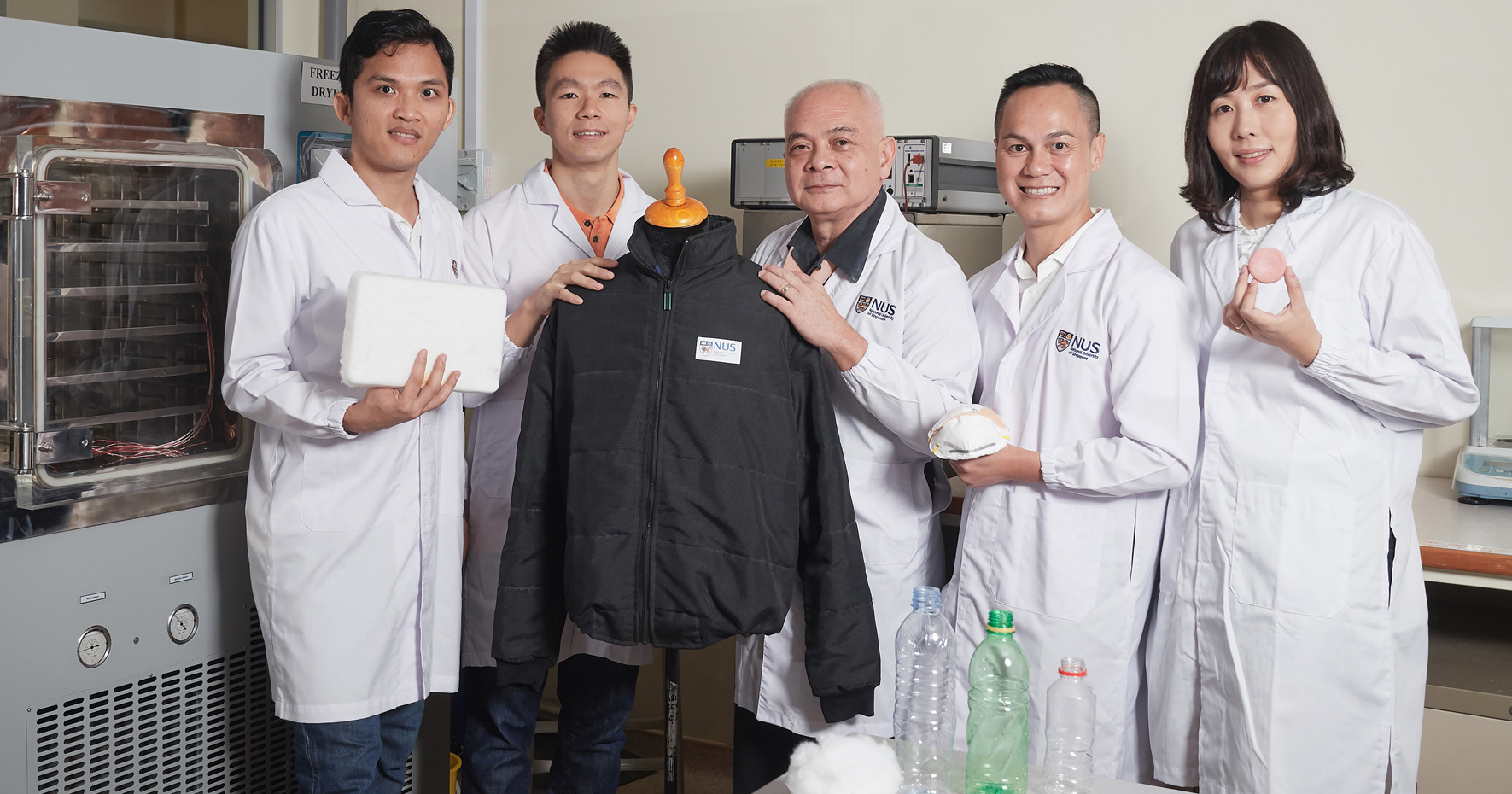There might just be a made-in-Singapore solution to the global discarded plastic problem.
Scientists from the National University of Singapore and the Singapore Institute of Manufacturing Technology have found a way to convert unwanted plastic bottles into a soft, flexible, durable, extremely light, easy to handle, usable and commercially viable material.
And they are seeking a global patent for their invention.
Making aerogel from plastic waste
A way has been found for discarded polyethylene terephthalate (PET) bottles used for water and soft drink bottles to be turned into a highly insulating and absorbent material called aerogel, which unlocks the residual commercial value of wastes.
The research team is led by NUS Associate Professor Hai Minh Duong, 44, and Professor Nhan Phan-Thien, 65.
 Via NUS Engineering
Via NUS Engineering
Their research breakthrough was recently covered by Channel News Asia.
Real-life applications of aerogel include being used as a lining for fire-retardant coats and carbon dioxide absorption masks; better heat and sound insulation in buildings; and cleaning oil spills.
 Via NUS
Via NUS
 Via NUS
Via NUS
Aerogels have existed since the 1930s. They are the lightest and most porous materials known to man.
In the 1990s, aerogels were used for space travel to insulate the Mars Pathfinder rover.
What aerogel can do
Over 95 percent of an aerogel’s volume is made of air.
This gives the material a high internal surface area and absorbent qualities.
Experiments by the team showed that aerogel coated with certain water-repellent chemicals absorbs up to seven times more oil and at a faster rate.
It is also excellent for insulation as it reduces sound more than any conventional insulation foam can.
It can also insulate against heat many times better than fibreglass.
When coated with flame retardants, it can withstand temperatures of up to 620° Celsius -- seven times more fireproof than the thermal lining in conventional fire-fighting suits.
It is about 10 percent of the weight of traditional materials.
Low costs
The most common type of commercially available aerogel is silica aerogel, used mainly in the aviation, car, gas and petroleum industries.
It sells for about S$40 per A4 size sheet.
PET aerogel created by the team would cost about 50 cents to manufacture, with one recycled bottle producing one sheet.
The production process has also been shortened to about eight to 10 hours.
It typically takes up to seven days.
How is aerogel made
The PET is first converted into fibres.
Chemicals and water are mixed with the fibres causing them to swell up and bind together.
It is the binding process that makes aerogel potent.
The final step is freeze-drying the mixture.
The team has touted the synthesised product as “one of the most promising materials in the 21st century”.
Previous aerogels
Previously, the team turned paper waste into cellulose aerogel, and has also turned unwanted cotton fabric turned into cotton aerogel.
Of the three, the PET version is the strongest with the fastest absorption capacity.
The cellulose aerogel technology was previously licensed through the NUS Industry Liaison Office to Bronxculture, a materials and engineering company based in Singapore.
The team has filed for a global patent for the PET aerogel and recently published their research in the scientific journal Colloids and Surfaces A.
It can take three to five years before any commercial product is in the market though.
The researchers are in the process of starting their own company to manage their cotton and PET aerogels.
Some 20 companies worldwide interested in partnering them, even though the company will be up and running by the end of next year earliest.
If you like what you read, follow us on Facebook, Instagram, Twitter and Telegram to get the latest updates.
